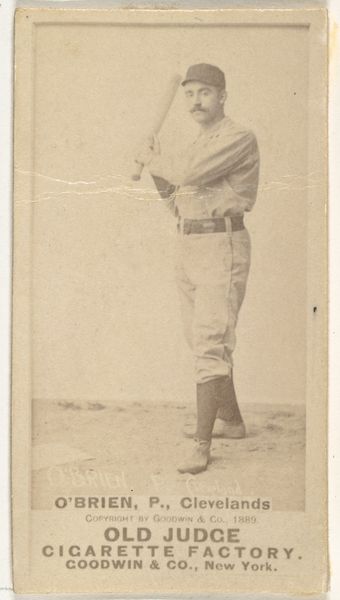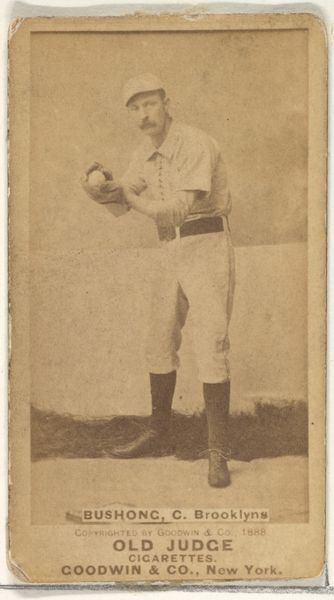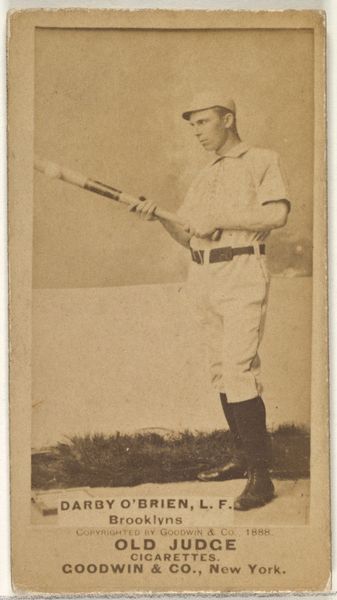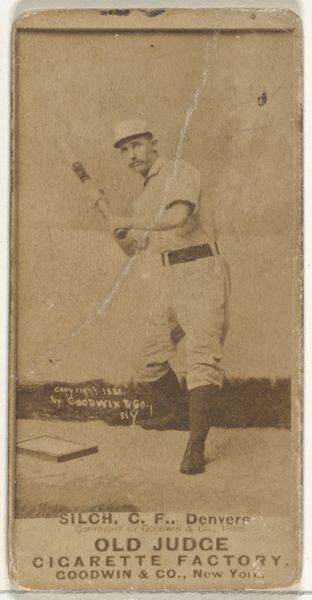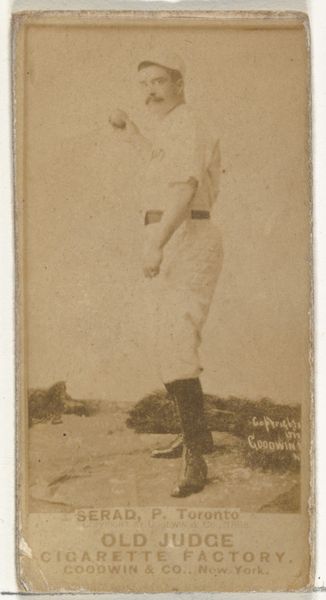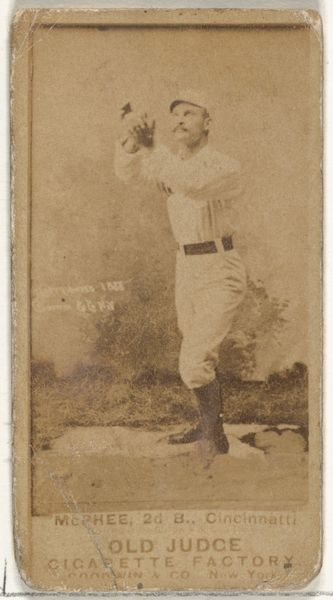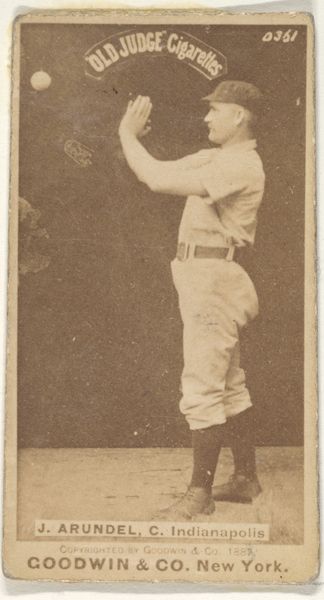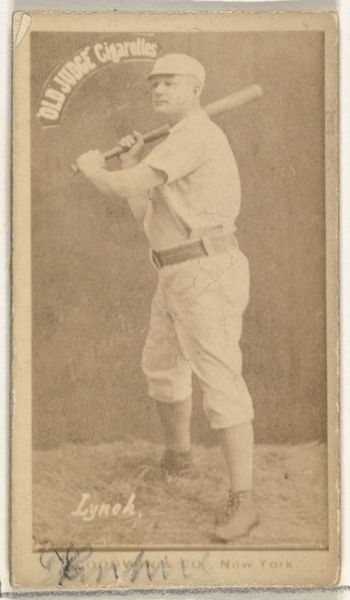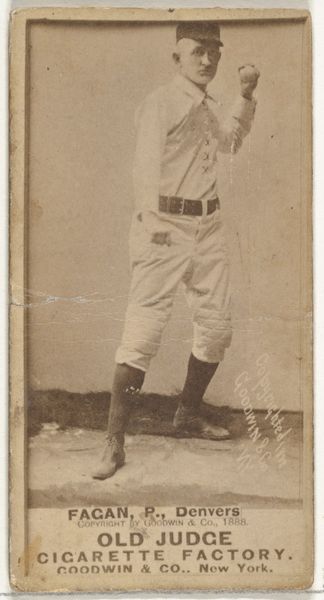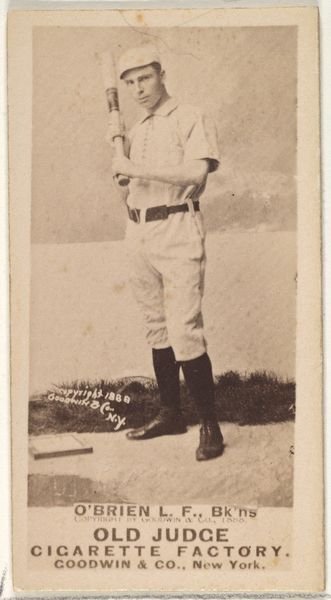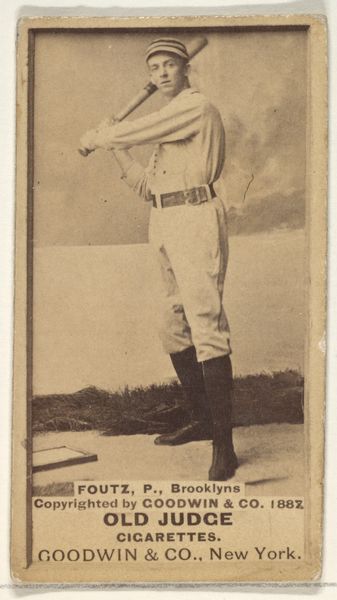
Wood, Left Field, Philadelphia, from the Kalamazoo Bats series (N690) issued by Chas. Gross & Co. to promote Kalamazoo Bats 1887
0:00
0:00
print, photography
#
portrait
#
toned paper
#
water colours
# print
#
baseball
#
photography
#
men
#
athlete
Dimensions: Sheet: 4 in. × 2 1/4 in. (10.1 × 5.7 cm)
Copyright: Public Domain
Curator: This photographic print, "Wood, Left Field, Philadelphia," produced around 1887 by Chas. Gross & Co., features a posed baseball player, intended as a trade card. Editor: It’s evocative! Something about the sepia tones and formal pose gives a sense of reverence, almost like a saint in a stained-glass window—holding not a religious icon but a baseball bat. Curator: Trade cards like these functioned as miniature billboards; the imagery wasn't solely about baseball, it was about associating Kalamazoo Bats with values like strength and tradition to encourage consumption of the tobacco products advertised on the card. The specific printing process also mattered: albumen prints mounted on card stock were popular at the time because of their fine detail and ability to reproduce photographic images affordably at scale. Editor: Absolutely. Look at the uniform—the stripes, the buttoned high collar—it symbolizes order, belonging. Baseball itself, even back then, was becoming deeply symbolic of American identity, offering heroes and shared narratives in a rapidly changing world. This athlete, "Wood," embodies the idealized, disciplined worker ready to perform. Curator: And consider the physical card itself—small enough to fit in a pocket, easily circulated, handled, collected, traded. This tangible aspect underscores how imagery operated in that era, quite unlike our digital consumption today. It speaks to the importance of material culture and how objects mediated social relations and economic exchange. Editor: And isn’t it compelling how this portrait, ostensibly about promoting a product, transcends that original purpose? Today we see it through a lens of nostalgia, but also something deeper. The symbols embedded within—baseball, athletic prowess, team affiliation—continue to resonate. It reflects the continuing fascination with archetypes. Curator: Indeed, analyzing these cards reminds us to look at art not in isolation but within its broader network of production, distribution, and reception, because only then we can grasp the fullness of its impact. Editor: A powerful collision of material context and enduring symbolic resonance.
Comments
No comments
Be the first to comment and join the conversation on the ultimate creative platform.
